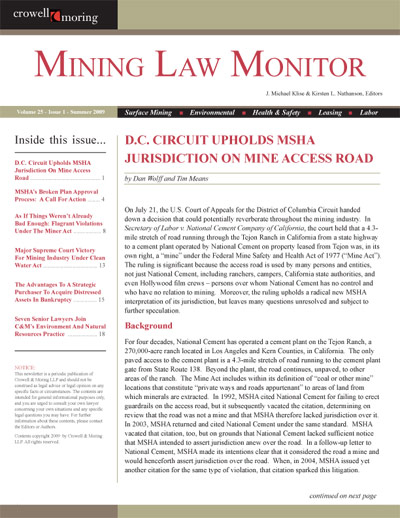Mining Law Monitor - Volume 25, Issue 1 - (Summer 2009)
Client Alert | 11 min read | 08.01.09
Click here to download a PDF of the Mining Law Monitor.
Included Articles:
- D.C. Circuit Upholds MSHA Jurisdiction On Mine Access Road
- MSHA's Broken Plan Approval Process: A Call For Action
- As If Things Weren't Already Bad Enough: Flagrant Violations Under The Miner Act
- Major Supreme Court Victory For Mining Industry Under Clean Water Act
- The Advantages To A Strategic Purchaser To Acquire Distressed Assets In Bankruptcy
- Seven Senior Lawyers Join C&M's Environment and Natural Resources Practice
Contacts
Insights
Client Alert | 10 min read | 12.24.25
Since the signing of Executive Order 14187 (“Protecting Children from Chemical & Surgical Mutilation”) in late January 2025, the Trump Administration has made its skeptical stance on gender-affirming care—especially regarding services provided to minors—clear.
Client Alert | 3 min read | 12.24.25
Keeping it Real: FTC Targets Fake Reviews in First Consumer Review Rule
Client Alert | 5 min read | 12.23.25
An ITAR-ly Critical Reminder of Cybersecurity Requirements: DOJ Settles with Swiss Automation, Inc.
Client Alert | 2 min read | 12.23.25
Record-Setting False Claims Act Settlement Highlights DOJ Commitment to Customs Enforcement




